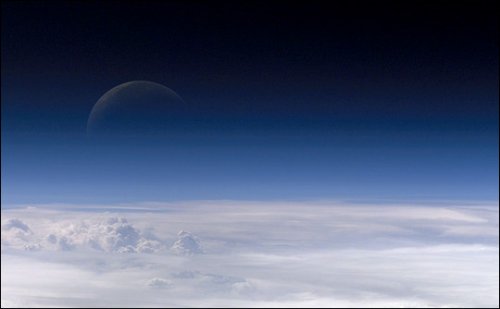
Thin blue line: BBC Radio explores our atmosphere (Courtesy: NASA)
By Hamish Johnston
Last night I listened to the second instalment of BBC Radio’s Thin Air, a three part series that looks at the wondrous properties of the Earth’s atmosphere.
In part two science journalist Gabrielle Walker looks at the various gases that make up air. What I found particularly fascinating is the account of how the atmosphere has evolved over billions of years to become what it is today.
Oxygen, for example, was initially a toxic waste-product of life rather than a life giver. For a long time it was absorbed by rocks, allowing early life to flourish, but then the rocks could take no more. The subsequent build-up of oxygen in the atmosphere is described as the worst pollution incident in the history of the planet by James Lovelock, who is one of the scientists interviewed on the programme.
The first episode looks at the atmosphere as a whole, weighing the air in the Albert Hall and discovering that blood boils above a certain altitude.
You can listen to the first instalment here.
The second episode can be found here, but only for six more days.
After that, the second (and eventually third) programme should be found here.



